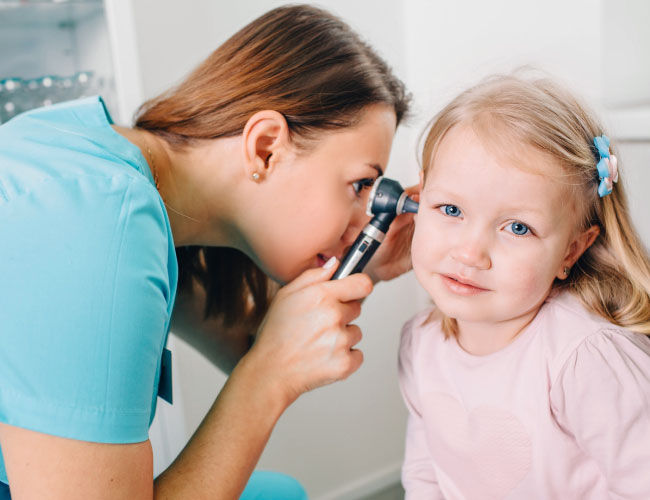Pediatric Hearing Tests Near Boise
Are you concerned about your child's hearing? Do you know if your child has hearing loss? Eagle Hearing specializes in pediatric hearing testing and hearing aid amplification services for children in Boise, Eagle and the surrounding area.
- Otoacoustic Emissions (OAE's) Also known as the newborn hearing screening test. This test measures detects outer hair cell movement. Outer hair cell damage has a results of sensorineural hearing loss.
- Auditory Brainstem Response (ABR) Test - Directly measures the sensitivity of the auditory nerve by detecting auditory evoked potentials.
- Visual Reinforcement Audiometry (6 months to 3 years of age) - Visual Reinforcement Audiometry allows us to obtain a precise hearing test based upon head movement. At Eagle Hearing, we use lighted toys as a reward in response to a child correctly identifying a sound source.
- Conditioned Play Audiometry (3 to 5 years of age) - Conditioned Play Audiometry allows a hearing test by engaging the child to play a game such as dropping a toy into a bucket when a sound is heard.

Pediatric Testing
The Joint Committee on Infant Hearing has guidelines that audiologists strive to meet in order to maximize linguistic competence and literacy development for children who are deaf or hard of hearing.
Goals of infant hearing testing:
- To complete the newborn hearing screen by 1 month of age.
- All infants who do not pass the initial hearing screening and the subsequent rescreening should have appropriate audiological and medical evaluations to confirm the presence of hearing loss at no later than 3 months of age.
- All infants with confirmed permanent hearing loss should receive early intervention services as soon as possible after diagnosis but at no later than 6 months of age. The child and family should have immediate access to high-quality technology including hearing aids, cochlear implants, and other assistive devices when appropriate.
You can read the entire statement from the American Journal of Pediatrics: Year 2007 Position Statement: Principles and Guidelines for Early Hearing Detection and Intervention Programs
Useful Links